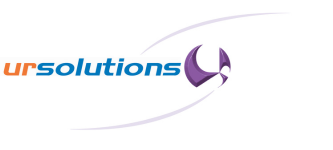- Privacy Policy
- Our Service Commitment
- Red Hat Delivers Accessible, Open Source Generative AI Innovation with Red Hat Enterprise Linux AI
- Is Red Hat OpenShift Container Platform Virtualization the Best Alternative to VMware Amid Rising Costs?
- Top 10 Stories About Compute Engines, Linux of 2024 (So Far) - ITPro Today
UR Solutions News
Open-source News
PulseAudio 16.0 Released With A Variety Of Improvements
While PipeWire continues gaining traction for fulfilling the audio management roles long handled by PulseAudio, the PulseAudio project itself continues progressing and successfully evolving its mature code-base. Out this weekend is PulseAudio 16.0...
How to Change File Extensions on Linux - MUO - MakeUseOf
How to Change File Extensions on Linux MUO - MakeUseOf
New Windows Subsystem for Linux malware steals browser auth cookies - BleepingComputer
New Windows Subsystem for Linux malware steals browser auth cookies BleepingComputer
Chrome 103 Beta Adds Local Font Access, Deflate-Raw Compression Format
Following this week's release of Chrome 102, Google has promoted Chrome 103 to beta for their cross-platform web browser...
How To Mount and Unmount Drives on Linux - Tom's Hardware
How To Mount and Unmount Drives on Linux Tom's Hardware
How To Mount and Unmount Drives on Linux - Tom's Hardware
How To Mount and Unmount Drives on Linux Tom's Hardware
Numerous "MM" Improvements Land In Linux 5.19
Andrew Morton with his recent shift to a Git-based workflow rather than maintaining long patch series has sent in all of the memory management "mm" changes for the Linux 5.19 merge window...
Timer Mechanisms With C and Linux - MUO - MakeUseOf
Timer Mechanisms With C and Linux MUO - MakeUseOf
Intel oneVPL 2022.1 Brings Support For Arc A Series, Rocky Linux, Better Multi-GPU
While for years Intel has traditionally devoted all their video acceleration attention on Linux to VA-API (and the Media SDK albeit less popular with Linux enthusiasts), with the modern oneAPI world for Intel hardware their oneVPL library is quickly becoming a viable contender and a primary focus for their open-source video accelerator efforts. On Friday the oneVPL 2022.1 release was made available...
FAT32 File Creation/Birth Time Reporting Finally Comes To Linux
Finally for FAT file-systems with the in-development Linux 5.19 kernel is support via the statx() system call for reporting a file's birth/creation time...
KDE Developers Land More Bug Fixes Ahead Of Plasma 5.25
Ahead of next month's big Plasma 5.25 release, KDE developers are wrapping up May with more bug fixes for polishing up this open-source desktop...
CXL Support Continues To Be Refined In Linux 5.19 Ahead Of Next-Gen Servers
Intel has been working heavily on getting the Compute Express Link (CXL) subsystem in place so that when next-generation servers appear with this new high-speed interconnect industry standard, open-source operating systems will be ready...
